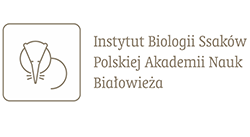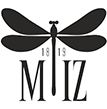- Wyszukaj w całym Repozytorium
- Piśmiennictwo i mapy
- Archeologia
- Baza Młynów
- Nauki przyrodnicze
Wyszukiwanie zaawansowane
Wyszukiwanie zaawansowane
Wyszukiwanie zaawansowane
Wyszukiwanie zaawansowane
Wyszukiwanie zaawansowane

Obiekt
Tytuł: Inteligentny system identyfikacji zanieczyszczenia powietrza = Intelligent air pollution identification system
Inny tytuł:
Przegląd Geograficzny T. 97 z. 1 (2025)
Wydawca:
Miejsce wydania:
Opis:
Abstrakt:
Celem opisanego w pracy działania jest opracowanie inteligentnego systemu identyfikacji zanieczyszczeń powietrza. Zastosowanie sztucznej inteligencji, wykorzystującej analizę obrazów powierzchni wybranych indykatorów zanieczyszczenia powietrza do budowy algorytmu uczenia maszynowego umożliwiło opracowanie taniej i skutecznej metody identyfikacji niebezpiecznych substancji. Do budowy modelu zostały wykorzystane zdjęcia skaningowej mikroskopii elektronowej dwuletnich igieł sosny zwyczajnej Pinus sylvestris L., z reprezentatywnych zlewni badawczych krajowej sieci Zintegrowanego Monitoringu Środowiska Przyrodniczego. Zdjęcia mikroskopowe zostały przetworzone w programie graficznym, tak aby zaklasyfikowane na podstawie wielkości, kształtu i składu chemicznego cząstki posiadały jednakowy atrybut (barwę). Wykonane warstwy (maski) stanowiły element właściwy do opracowania algorytmu uczenia maszynowego identyfikującego zanieczyszczenia z podziałem na zdefiniowane wcześniej kategorie. Zastosowanie sieci neuronowych do budowy samouczącego się algorytmu pozwoliło zoptymalizować analizę zdeponowanych zanieczyszczeń zobrazowanych na powierzchni igieł sosny. Opracowany system identyfikacji naturalnych i antropogenicznych cząstek w postaci skategoryzowanych warstw daje skuteczność predykcji na wysokim poziomie.
;
Bibliografia:
Ailon, N., Chazelle, B., Clarkson, K.L., Liu, D., Mulzer, W., & Seshadhri, C. (2011). Self‑Improving Algorithms. SIAM Journal on Computing, 40(2), 350‑375. https://doi.org/10.1137/090766437
![]()
Akimoto, H. (2003). Global air quality and pollution. Science, 302(5651), 1716‑1719. https://doi.org/10.1126/science.1092666
![]()
Alaimo, M.G., Dongarra, G., Melati, M.R., Monna, F., & Varrica, D. (2000). Recognition of environmental trace metal contamination using pine needles as bioindicators. The urban area of Palermo (Italy). Environmental Geology, 39(8), 914‑924. https://doi.org/10.1007/s002549900071
![]()
Allegrini, I., & Pirrone, N. (2007). 19 Global scale atmospheric pollution: a regional problem. W: R. Baudo, G. Tartari, & E. Vuillermoz (red.), Developments in earth surface processes, 10 (s. 145‑146). https://doi.org/10.1016/s0928‑2025(06)10019‑x
![]()
Arroyo, P., Gómez‑Suárez, J., Suárez, J.I., & Lozano, J. (2021). Low‑Cost Air Quality Measurement System Based on Electrochemical and PM Sensors with Cloud Connection. Sensors, 21(18), 6228.https://doi.org/10.3390/s21186228
![]()
Ayaz, M., Tasdemirci, E., Yuksel, H., & Aygul, V. (2018). Comprehensive study on automation of toxic gas measurement. Arabian Journal of Geosciences, 11(22). https://doi.org/10.1007/s12517‑018‑4066‑5
![]()
Benbahria, Z., Sebari, İ., Hajji, H., & Smiej, M.F. (2021). Intelligent mapping of irrigated areas from Landsat 8 images using transfer learning. International Journal of Engineering and Geosciences, 6(1), 40‑50. https://doi.org/10.26833/ijeg.681312
![]()
Bousiotis, D., Singh, A., Haugen, M., Beddows, D.C.S., Diez, S., Murphy, K.L., Edwards, P.M., Boies, A., Harrison, R.M., & Pope, F.D. (2021). Assessing the sources of particles at an urban background site using both regulatory instruments and low‑cost sensors - a comparative study. Atmospheric Measurement Techniques, 14(6), 4139‑4155. https://doi.org/10.5194/amt‑14‑4139‑2021
![]()
Cetina, K., Buenaposada, J.M., & Baumela, L. (2018). Multi‑class segmentation of neuronal structures in electron microscopy images. BMC Bioinformatics, 19(1). https://doi.org/10.1186/s12859‑018‑2305‑0
![]()
Chklovskii, D.B., Vitaladevuni, S., & Scheffer, L.K. (2010). Semi‑automated reconstruction of neural circuits using electron microscopy. Current Opinion in Neurobiology, 20(5), 667‑675. https://doi.org/10.1016/j.conb.2010.08.002
![]()
Chollet, F. (2021). Deep Learning with Python, Second Edition. Simon and Schuster.
Cindrić, I.J., Zeiner, M., Starčević, A., & Stingeder, G. (2018). Metals in pine needles: characterisation of bio‑indicators depending on species. International Journal of Environmental Science and Technology, 16(8), 4339‑4346. https://doi.org/10.1007/s13762‑018‑2096‑x
![]()
Eriksson, G., Jensen, S., Kylin, H., & Strachan, W. (1989). The pine needle as a monitor of atmospheric pollution. Nature, 341(6237), 42‑44. https://doi.org/10.1038/341042a0
![]()
Fan, A.M. (2014). Biomarkers in toxicology, risk assessment, and environmental chemical regulations. W: R.C. Gupta (red.), Elsevier eBooks (s. 1057‑1080). https://doi.org/10.1016/b978‑0‑12‑404630‑6.00064‑6
![]()
Fowler, D., Brimblecombe, P., Burrows, J., Heal, M.R., Grennfelt, P., Stevenson, D.S., Jowett, A., Nemitz, E., Coyle, M., Liu, X., Chang, Y., Fuller, G.W., Sutton, M.A., Klimont, Z., Unsworth, M.H., & Vieno, M. (2020). A chronology of global air quality. Philosophical Transactions - Royal Society. Mathematical, Physical and Engineering Sciences/Philosophical Transactions - Royal Society. Mathematical, Physical and Engineering Sciences, 378(2183), 20190314. https://doi.org/10.1098/rsta.2019.0314
![]()
Hagan, D.H., & Kroll, J.H. (2020). Assessing the accuracy of low‑cost optical particle sensors using a physics‑based approach. Atmospheric Measurement Techniques, 13, 6343‑6355. https://doi.org/10.5194/amt‑13‑6343‑2020
![]()
Hartmann, J., West, A.J., Renforth, P., Köhler, P., De La Rocha, C.L., Wolf‑Gladrow, D.A., Dürr, H.H., & Scheffran, J. (2013). Enhanced chemical weathering as a geoengineering strategy to reduce atmospheric carbon dioxide, supply nutrients, and mitigate ocean acidification. Reviews of Geophysics, 51(2), 113‑149. https://doi.org/10.1002/rog.20004
![]()
Huszar, P., Karlický, J., Marková, J., Nováková, T., Liaskoni, M., & Bartík, L. (2021). The regional impact of urban emissions on air quality in Europe: the role of the urban canopy effects. Atmospheric Chemistry and Physics, 21(18), 14309‑14332. https://doi.org/10.5194/acp‑21‑14309‑2021
![]()
Ikeno, H., Kumaraswamy, A., Kai, K., Wachtler, T., & Ai, H. (2018). A segmentation scheme for complex neuronal arbors and application to vibration sensitive neurons in the honeybee brain. Frontiers in Neuroinformatics, 12. https://doi.org/10.3389/fninf.2018.00061
![]()
Jiménez, E., Tapiador, F.J., & Sáez‑Martínez, F.J. (2014). Atmospheric pollutants in a changing environment: key issues in reactivity and monitoring, global warming, and health. Environmental Science and Pollution Research International, 22(7), 4789‑4792. https://doi.org/10.1007/s11356‑014‑3850‑3
![]()
Jones, C., Sayedhosseini, M., Ellisman, M., & Tasdizen, T. (2013). Neuron Segmentation in Electron Microscopy Images Using Partial Differential Equations. 2013 IEEE 10th International Symposium on Biomedical Imaging, San Francisco, CA, USA, 2013, 1457‑1460. https://doi.org/10.1109/ISBI.2013.6556809
![]()
Jones, C., Sayedhosseini, M., Ellisman, M., & Tasdizen, T. (2013). Neuron Segmentation in Electron Microscopy Images Using Partial Differential Equations. 2013 IEEE 10th International Symposium on Biomedical Imaging, San Francisco, CA, USA, 2013, 1457‑1460.https://doi.org/10.1109/ISBI.2013.6556809
![]()
Kabata‑Pendias, A., & Pendias, H. (1999). Biogeochemia pierwiastków śladowych. Warszawa: Wydawnictwo PWN.
Keywood, M., Paton‑Walsh, C., Lawrence, M., George, C., Formenti, P., Schofield, R., Cleugh, H., Borgford‑Parnell, N., & Capon, A. (2023). Atmospheric goals for sustainable development. Science, 379(6629), 246‑247. https://doi.org/10.1126/science.adg2495
![]()
Kingma, D.P., & Ba, J.L. (2014). Adam: A method for stochastic optimization. arXiv (Cornell University). https://doi.org/10.48550/arxiv.1412.6980
![]()
Konwencja LRTAP. 1979. Konwencja w sprawie transgranicznego zanieczyszczania powietrza na dalekie odległości, sporządzona w Genewie dnia 13 listopada 1979 r. (Dz.U. z 1985 r. Nr 60, poz. 311)
Kostrzewski, A., & Majewski, M. (2021). Zintegrowany monitoring środowiska przyrodniczego: organizacja, system pomiarowy, metody badań, wytyczne do realizacji. Warszawa: Biblioteka Monitoringu Środowiska.
Kostrzewski, A., Majewski, M., & Szpikowski, J. (2022). Współczesne przemiany naturalne i antropogeniczne środowiska przyrodniczego zlewni rzecznych i jeziornych. Storkowo: Biblioteka Monitoringu Środowiska.
Kozáková, J., Pokorná, P., Vodička, P., Ondráčková, L., Ondráček, J., Křůmal, K., Mikuška, P., Hovorka, J., Moravec, P., & Schwarz, J. (2018). The influence of local emissions and regional air pollution transport on a European air pollution hot spot. Environmental Science and Pollution Research International, 26(2), 1675‑692. https://doi.org/10.1007/s11356‑018‑3670‑y
![]()
Kozłowski, R., Szwed, M., Kozłowska, A., Przybylska, J., & Mach, T. (2024). Quality Management System in Air Quality Measurements for Sustainable Development. Sustainability, 16(17), 7537. https://doi.org/10.3390/su16177537
![]()
Kurenkov, A. (2020). A Brief History of Neural Nets and Deep Learning. Skynet Today. https://skynettoday.com/overviews/neural‑net‑history
Magiera, T., Gołuchowska, B., Jabłońska, M. (2013). Technogenic magnetic particles in alkaline dusts from power and cement plants. Water Air & Soil Pollution, 224 (1389), 1‑17. https://doi.org/10.1007/s11270‑012‑1389‑9.
![]()
Maňkovská, B., Godzik, B., Badea, O., Shparyk, Y., & Moravčík, P. (2004). Chemical and morphological characteristics of key tree species of the Carpathian Mountains. Environmental Pollution, 130(1), 41‑54. https://doi.org/10.1016/j.envpol.2003.10.020
![]()
Мелехин, В.Б. (1984). Self‑learning algorithm for an integrated robot with active and passive behavioral logic. Cybernetics, 20(4), 600‑606. https://doi.org/10.1007/bf01068936
![]()
Romanič, S., & Krauthacker, B. (2007). Are pine needles bioindicators of air pollution? Comparison of organochlorine compound levels in pine needles and ambient air. Arhiv Za Higijenu Rada I Toksikologiju, 58(2), 195‑199. https://doi.org/10.2478/v10004‑007‑0012‑8
![]()
Russakovsky, O., Deng, J., Su, H., Krause, J., Satheesh, S., Ma, S., Huang, Z., Karpathy, A., Khosla, A., Bernstein, M., Berg, A.C., & Fei‑Fei, L. (2015). ImageNet Large Scale Visual Recognition Challenge. International Journal of Computer Vision, 115(3), 211‑252. https://doi.org/10.1007/s11263‑015‑0816‑y
![]()
Samet, J.M., & Chung, Y.S. (2017). Air Quality, Atmosphere & Health: the 10‑year anniversary. Air Quality, Atmosphere & Health, 11(1), 1‑2. https://doi.org/10.1007/s11869‑017‑0541‑5
![]()
Shaddick, G., Salter, J.M., Peuch, V., Ruggeri, G., Thomas, M.L., Mudu, P., Tarasova, O., Baklanov, A., & Gumy, S. (2020). Global Air Quality: An Inter‑Disciplinary Approach to exposure assessment for burden of disease analyses. Atmosphere, 12(1), 48. https://doi.org/10.3390/atmos12010048
![]()
Susanto, A.D. (2020). Air pollution and human health. Medical Journal of Indonesia, 29(1), 8‑10. https://doi.org/10.13181/mji.com.204572
![]()
Szwed, M., Kozłowski, R., Żukowski, W. (2020). Assessment of Air Quality in the South‑Western Part of the Świętokrzyskie Mountains Based on Selected Indicators. Forests, 11, 499. https://doi.org/10.3390/f11050499.
![]()
Szwed, M., Żukowski, W., & Kozłowski, R. (2021). The Presence of Selected Elements in the Microscopic Image of Pine Needles as an Effect of Cement and Lime Pressure within the Region of Białe Zagłębie (Central Europe). Toxics, 9(1), 15. https://doi.org/10.3390/toxics9010015
![]()
Świercz, A., Szwed, M., Bąk, Ł. (2024). Environmental consequences of a galvanising plant fire. Journal of Water and Land Development, 62(7‑9), 1‑9. https://doi.org/10.24425/jwld.2024.151552
![]()
Tadeusiewicz, R. (1993). Sieci neuronowe. Warszawa: Akademicka Oficyna Wydawnicza
Tadeusiewicz, R. (2015). Neural networks as a tool for modeling of biological systems. Bio-Algorithms & Med-Systems (Online)/Bio-Algorithms and Med-Systems, 11(3), 135‑144. https://doi.org/10.1515/bams‑2015‑0021
![]()
Takano, A.P.C., Rybak, J., Veras, M.M. (2024). Bioindicators and Human Biomarkers as Alternative Approaches for Cost‑Effective Assessment of Air Pollution Exposure. Frontiers in Environmental Engineering, 3. https://doi.org/10.3389/fenve.2024.1346863.
![]()
Thacore, S. (1998). An evolutionary self‑learning methodology: Some preliminary results from a case study. In Lecture notes in computer science (pp. 387‑396). https://doi.org/10.1007/bfb0040791
![]()
WHO. 2021. WHO global air quality guidelines: particulate matter (PM2.5 and PM10), ozone, nitrogen dioxide, sulfur dioxide and carbon monoxide. Geneva: World Health Organization. Pobrane z: https: //www.who.int/publications/i/item/9789240034228 (19.05.2024).
Czasopismo/Seria/cykl:
Tom:
Zeszyt:
Strona pocz.:
Strona końc.:
Szczegółowy typ zasobu:
Format:
Identyfikator zasobu:
oai:rcin.org.pl:244837 ; 0033-2143 (print) ; 2300-8466 (on-line) ; 10.7163/PrzG.2025.1.3
Źródło:
CBGiOŚ. IGiPZ PAN, sygn.: Cz.181, Cz.3136, Cz.4187 ; kliknij tutaj, żeby przejść
Język:
Język streszczenia:
Prawa:
Licencja Creative Commons Uznanie autorstwa 4.0
Zasady wykorzystania:
Zasób chroniony prawem autorskim. [CC BY 4.0 Międzynarodowe] Korzystanie dozwolone zgodnie z licencją Creative Commons Uznanie autorstwa 4.0, której pełne postanowienia dostępne są pod adresem: ; -
Digitalizacja:
Instytut Geografii i Przestrzennego Zagospodarowania Polskiej Akademii Nauk
Lokalizacja oryginału:
Dofinansowane ze środków:
Program Operacyjny Innowacyjna Gospodarka, lata 2010-2014, Priorytet 2. Infrastruktura strefy B + R ; Unia Europejska. Europejski Fundusz Rozwoju Regionalnego
Dostęp:
Kolekcje, do których przypisany jest obiekt:
- Digital Repository of Scientific Institutes > Partners' collections > Institute of Geography and Spatial Organization PAS (IGiPZ PAN) > Publications of IGiPZ PAN and employees
- Digital Repository of Scientific Institutes > Partners' collections > Institute of Geography and Spatial Organization PAS (IGiPZ PAN) > Library > Series/Journals/Periodics
- Digital Repository of Scientific Institutes > Literature > Journals/Articles
Data ostatniej modyfikacji:
14 kwi 2025
Data dodania obiektu:
14 kwi 2025
Liczba pobrań / odtworzeń:
21
Wszystkie dostępne wersje tego obiektu:
https://rcin.org.pl./publication/281496
Wyświetl opis w formacie RDF:
Wyświetl opis w formacie RDFa:
Wyświetl opis w formacie OAI-PMH:
| Nazwa wydania | Data |
|---|---|
| Szwed M. : Inteligentny system identyfikacji zanieczyszczenia powietrza = Intelligent air pollution identification system | 14 kwi 2025 |
Obiekty Podobne
Szafrańska, Ewa
Śleszyński, Przemysław
Kawecka-Endrukajtis, Barbara Tuszyńska-Rękawek, Halina Sielużycka, Jadwiga

 INSTYTUT ARCHEOLOGII I ETNOLOGII POLSKIEJ AKADEMII NAUK
INSTYTUT ARCHEOLOGII I ETNOLOGII POLSKIEJ AKADEMII NAUK
 INSTYTUT BADAŃ LITERACKICH POLSKIEJ AKADEMII NAUK
INSTYTUT BADAŃ LITERACKICH POLSKIEJ AKADEMII NAUK
 INSTYTUT BADAWCZY LEŚNICTWA
INSTYTUT BADAWCZY LEŚNICTWA
 INSTYTUT BIOLOGII DOŚWIADCZALNEJ IM. MARCELEGO NENCKIEGO POLSKIEJ AKADEMII NAUK
INSTYTUT BIOLOGII DOŚWIADCZALNEJ IM. MARCELEGO NENCKIEGO POLSKIEJ AKADEMII NAUK
 INSTYTUT BIOLOGII SSAKÓW POLSKIEJ AKADEMII NAUK
INSTYTUT BIOLOGII SSAKÓW POLSKIEJ AKADEMII NAUK
 INSTYTUT CHEMII FIZYCZNEJ PAN
INSTYTUT CHEMII FIZYCZNEJ PAN
 INSTYTUT CHEMII ORGANICZNEJ PAN
INSTYTUT CHEMII ORGANICZNEJ PAN
 INSTYTUT FILOZOFII I SOCJOLOGII PAN
INSTYTUT FILOZOFII I SOCJOLOGII PAN
 INSTYTUT GEOGRAFII I PRZESTRZENNEGO ZAGOSPODAROWANIA PAN
INSTYTUT GEOGRAFII I PRZESTRZENNEGO ZAGOSPODAROWANIA PAN
 INSTYTUT HISTORII im. TADEUSZA MANTEUFFLA POLSKIEJ AKADEMII NAUK
INSTYTUT HISTORII im. TADEUSZA MANTEUFFLA POLSKIEJ AKADEMII NAUK
 INSTYTUT JĘZYKA POLSKIEGO POLSKIEJ AKADEMII NAUK
INSTYTUT JĘZYKA POLSKIEGO POLSKIEJ AKADEMII NAUK
 INSTYTUT MATEMATYCZNY PAN
INSTYTUT MATEMATYCZNY PAN
 INSTYTUT MEDYCYNY DOŚWIADCZALNEJ I KLINICZNEJ IM.MIROSŁAWA MOSSAKOWSKIEGO POLSKIEJ AKADEMII NAUK
INSTYTUT MEDYCYNY DOŚWIADCZALNEJ I KLINICZNEJ IM.MIROSŁAWA MOSSAKOWSKIEGO POLSKIEJ AKADEMII NAUK
 INSTYTUT PODSTAWOWYCH PROBLEMÓW TECHNIKI PAN
INSTYTUT PODSTAWOWYCH PROBLEMÓW TECHNIKI PAN
 INSTYTUT SLAWISTYKI PAN
INSTYTUT SLAWISTYKI PAN
 SIEĆ BADAWCZA ŁUKASIEWICZ - INSTYTUT TECHNOLOGII MATERIAŁÓW ELEKTRONICZNYCH
SIEĆ BADAWCZA ŁUKASIEWICZ - INSTYTUT TECHNOLOGII MATERIAŁÓW ELEKTRONICZNYCH
 MUZEUM I INSTYTUT ZOOLOGII POLSKIEJ AKADEMII NAUK
MUZEUM I INSTYTUT ZOOLOGII POLSKIEJ AKADEMII NAUK
 INSTYTUT BADAŃ SYSTEMOWYCH PAN
INSTYTUT BADAŃ SYSTEMOWYCH PAN
 INSTYTUT BOTANIKI IM. WŁADYSŁAWA SZAFERA POLSKIEJ AKADEMII NAUK
INSTYTUT BOTANIKI IM. WŁADYSŁAWA SZAFERA POLSKIEJ AKADEMII NAUK




































